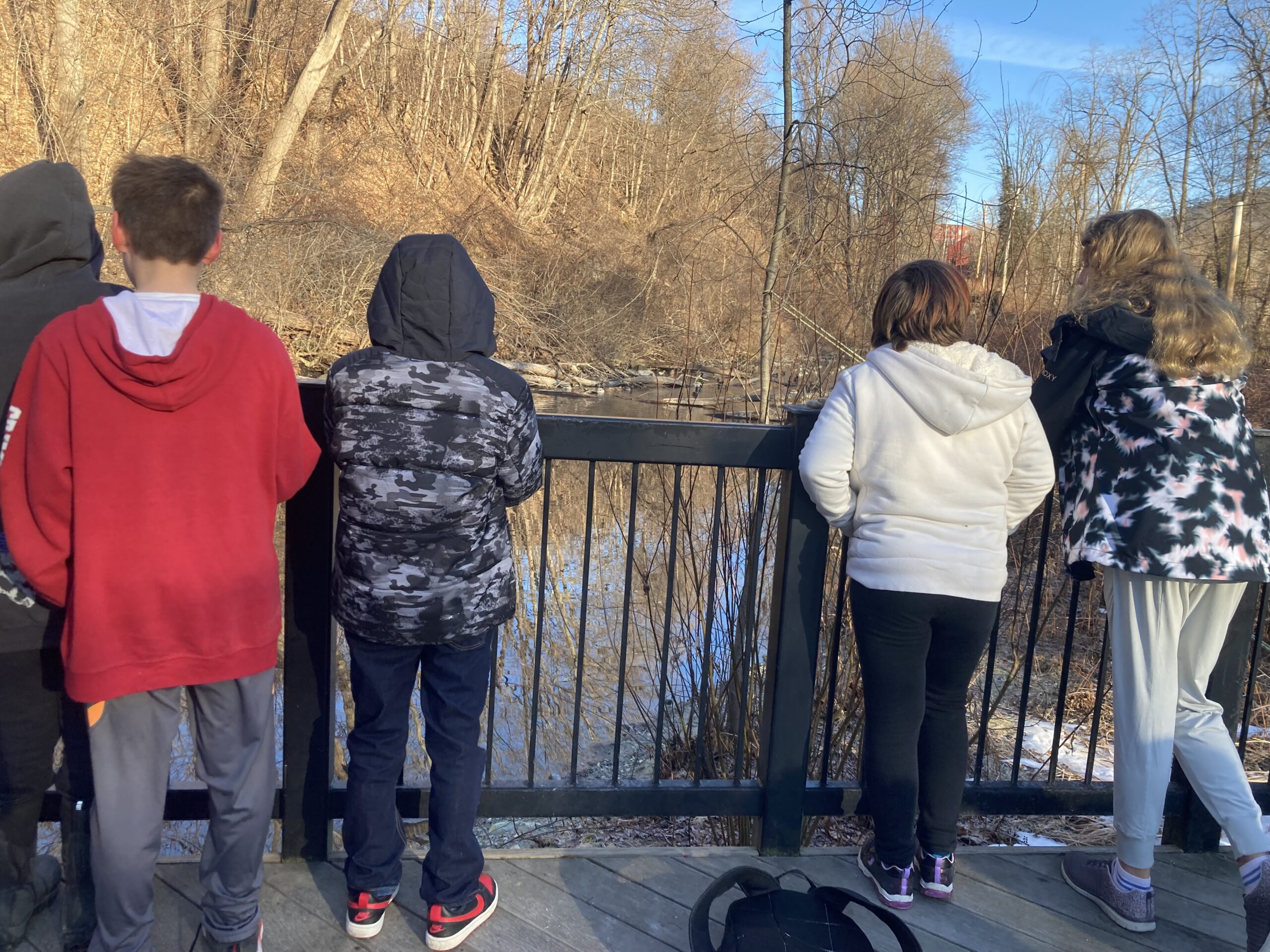BELLOWS FALLS, Vt. – During a busy morning at Bellows Falls Middle School, a group of sixth-grade students, led by science and social studies teacher Josh Ferenc, set off on an outdoor field study. Ferenc, full of enthusiasm for nature-based education, welcomed the opportunity to add observers to the exploration, exclaiming, “let’s go!” It was evident from the outset that Ferenc’s passion resonated deeply with his students.
Walking to the Riverfront Park, students in turn galloped and lagged behind, jostled and walked in an orderly group – but all stopped in their tracks at the crosswalk, with hardly a word from Ferenc. With endless chatter, students wondered out loud if they would also be going into the woods today, or down to the river, other areas of green space that are part of science studies for Ferenc’s sixth graders.

“The benefit is amazing – some of our students may only explore outside when they are in my class. One of my goals is to ensure they are comfortable in nature; they know how to engage not just in playing outside, but in learning outside. They can be in nature safely and with boundaries, but with space to learn with independence and curiosity.”
Starting with the sighting of a bald eagle perched above the Connecticut River, Ferenc modeled wildlife observation, noting it to the students and moving on, a practice repeated throughout our time. After gathering on stone benches to outline the plan for the exploration, students dispersed, congregating by the geothermal pool, home to a number of mallard ducks. The organized chaos and “playful with a purpose” approach seems a hallmark with Ferenc as he guides students through his expectations without hovering over them.
In a district known for its integration of nature-based learning, Ferenc explained how the Middle School has been accessing natural spaces. “In Bellows Falls, we have to search out natural spaces – you couldn’t call us ‘urban’ but it does physically take longer to access green spaces close to our school site, which is different than some of the other schools in our district.” And despite time limitations, it is well worth it. “For those students who struggle with behavior, some time in a new atmosphere with new ways to connect with the curriculum is needed,” Ferenc explains, as it can reduce stress and allow students to reengage back in their classrooms. For students who are already highly engaged, it’s a new way to stretch their learning muscles beyond the classroom lessons. Student Bethany Stockwell reflected on the difference between outdoor and indoor learning, and how the combination helps her. “I appreciate going outside for classes because it gets me out of the building and classroom. I also like going outside for classes because it’s easy for me to get my work done, because I can find an area to get my work done quietly without any distractions.”
With help from teaching colleague Cristal Farnsworth, and through coursework provided through the Wilderness Institute, Ferenc has developed a science curriculum that builds in Vermont-based connection, and leads students through a process of “engage, explore, elaborate, and evaluate.” Today’s field study would translate into classroom lessons on bird identification, vocabulary expansion, and reflective journaling.
Ferenc likes to remind his students that they live in a special place with so many opportunities for biological and ecological studies, and while they don’t have the grandeur of Montana, they do have the Connecticut River which holds so many opportunities for biological and ecological studies. “It serves as a superhighway for migrating geese; our students can study along its banks; they can do water studies in the spring. They are learning about the wider world, but in their backyard.”
Outdoor activities like building life-sized shelters, inspired by the curriculum’s reading of “Hatchet,” by Gary Paulsen, exemplify the school’s cross-curricular approach to teaching and learning at the middle school. In the book, the main character creates a shelter from the elements. After reading the book, students reexamined the detailed passages about how Brian made the shelter, and then had the opportunity to do the same. The investment that the sixth grade teaching team has made to create outdoor opportunities for learning, and to connect across all the subject areas, is what makes teaching and learning meaningful and engaging for students like Shaelin Smith, who called it one of the most memorable experiences she’s had at school.
And as encouragement to other teachers to continue the momentum of nature-based educational opportunities, and in an ode to “don’t overthink it,” Ferenc says, “Choosing to do outdoor education is a light switch, not a circuit board – it’s flipping a switch to say yes.” It can be done without a lot of fuss, to help students connect with and learn from their community and the natural world, one outdoor adventure at a time.